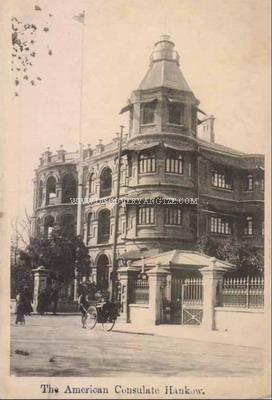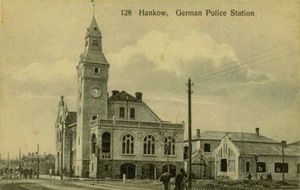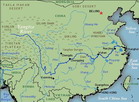2020 Yangtze River Cruise and Ferry Starting from 79 USD p.p.!
WuHan Introduction
At the centre of the Long River's
course to the sea and on the main rail line
between north an d
south China sprawls the tripartite city of Wuhan.
Wuhan is set in the vast Jianghan Plain, a region
that is more water than land. Levees protect
the city from the seasonal ravages of the Yangtze.
Wulian serves as the capital of Hubei Province.It
is comprised of three formerly separate cities
Wichang, Hankou and Hanyang.
d
south China sprawls the tripartite city of Wuhan.
Wuhan is set in the vast Jianghan Plain, a region
that is more water than land. Levees protect
the city from the seasonal ravages of the Yangtze.
Wulian serves as the capital of Hubei Province.It
is comprised of three formerly separate cities
Wichang, Hankou and Hanyang.
On the north bank lies Hankou, the
commercial centre and port complex, now gleaming
with a new skyline sprouting along its broad
avenues. Hankou has always been the most developed
of the three cities, ever since treaty port
days. It is still the businessand shopping heart
of the city and contains the sites of former
foreign concessions and the waterfront Bund.
One may dock in summer flood season to walk
down gangways onto the dykes and then down to
street level. The passenger ship terminal in
Hankou is shaped like a cartoon image of a ship,
from where stream thousands of travellers from
the sharp--prowed transport ships from Shanghai
and Chongqing. Deluxe cruise ships--Chinese
style--tie up with their flashing karaoke club
lights and "welcome" maidens wearing
silk qiPao on the gangway.
The former British Customs House
clock tower remains at water's edge, now topped
with a Ted star. Its prominence is today eclipsed
by mirrored nightclubs. Newcomers line the waterfront
where clipper ships once loaded tea. The jumbled
old neighbourhoods and alleyways where foreign
sailors once entered at their own risk are being
torn down for grander shopping malls. Many of
the graceful European-style building of the
early century are being replaced with glass-walled
towers.
One can still hop on bicycle pedicabs
to wind through the neighborhood streetmarkets,
which arc also being chased out by development.
In the remaining old sections, the most interesting
parts are too narrow for bikes, but good to
walk. Watch your step! The local cuisine is
rich in aquatic products including snails, frogs,
eels and myriad pond and river fish. Rats are
also trapped for culinary use.
Across the Han River flowing
from the north is Hanyang, known for the Turtle
Hill (Gui Shan) overlooking the Wuhan ChangJiang
Da Qiao (Bridge), the QingChuan Pavilion with
its superb river views and the Gi Yuan Si, an
active Buddhist temple. Upriver in Hanyang are
vast steel plants and factories.
On the south bank of the Yangtze
are the administrative and educational campuses
of Wuchang, the seat of the Hubei Provincial
Government and Wuhan University. The Yellow
Crane Tower (Huang He Lou), the famous symboI
of Wuhan, rises above the Great River at Wuchang
at the foot of the bridge. The Wuhan ChangJiang
Er Qiao(Bridge) links Hankou with Wuchang downriver.
The calm reaches of Wuchangs East Lake (Dong
Hu) with its bonsai gardens and excellent museums
are the best antidote to the smoggy hubbub of
the downtown districts.
Wuchang was the site of the 1911 uprising that
led to the overthrow of the QingDynasty. Mao
Ze Dong enjoyed staying in this city and had
his own villa on the shore of the Dong Hu.
The Tian He International Airport is just north
of the city via a direct expressway. As the
city economy continues to grow, much of the
old city is being lost to redevelopment, and
as in much of China, the new construction lacks
the social web of the old neighborhoods, though
many of the traditional fragrances remain.
HISTORY OF WUHAN
The area on which Wuhan stands was
settled in the first century;  in
the third century it was part of the Kingdom
of Wu. Wuchang is the oldest of the three cities.
By the Yuan dynasty (1279--1368) it was the
capital of the region and was enclosed by a
city wall until the end of the 19th century.
in
the third century it was part of the Kingdom
of Wu. Wuchang is the oldest of the three cities.
By the Yuan dynasty (1279--1368) it was the
capital of the region and was enclosed by a
city wall until the end of the 19th century.
Hanyang was founded in the Sui dynasty
(581--618) and remained a small walled city
until a farsighted official of the Qing dynasty
(1644--1911), Zhang Zhidong,estabished factories
and an arsenal there in the 1890's.
Hankou was only a fishing village until
the l9th century. lt is, however, the city of
Hankou which is best known to foreigners, for
after it was declared a treaty port in 1861
it became a major centre of the tea trade and
the focaI point of the annual China Tea Races.
There were five Foreign Concessions--British,
Russian, French, German and Japanese--situated
side by side along the north embankment of the
Yangtze. Ocean-.going steamers from New York,
Odessa and London anchored at their docks. Until
the foreign import of opium ceased in the first
decade of this century, opium-Iadenships sailed
up the river as far as Hankou.
Life in the foreign concessions
was similar to that in Shanghai. Horse-racing
was popuIar, with Hankou boasting two racecourses,
one for Chinese and one for foreigners. There
was even a golf course, while the Recreation
Club was considered by many to be the best in
China at that time.
In the 1911 Revolution, much of
Hankou was burnt to the ground during clashes
between revolutionaries and imperial troops.
After the fall of the capital,
Nanjing, in l937 to the Japanese during the
Sino-Japanese War, the Guomindang government
made Wuhan its capital for a year,before moving
to Chongqing. In the 1938 assault on Wuhan,
casualty figures were in the tens of thousands.
The Communist Party was very active in
Wuhan before l949, organizing railway strikes
and peasant training programmes. lt was here
that Chairman Mao, at the age of 73, took his
famous 15-kilometre (nine-mile) swim in the
Yangtze during the Cultural Revolution days
of 1966.
• Wuhan and Its History
• What to See in Wuhan
• The Hankou Tea Race
• A Hankou Flood
• Old Man River: Chairman Mao and The
Yangtze



